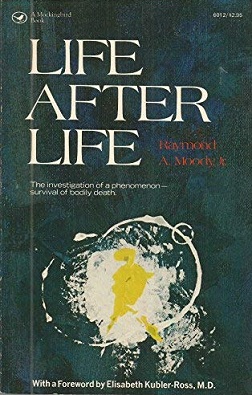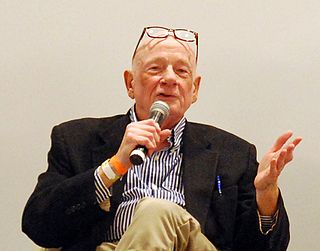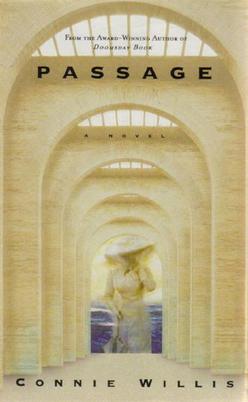Related Research Articles

Life After Life is a 1975 book written by psychiatrist Raymond Moody. It is a report on a qualitative study in which Moody interviewed 150 people who had undergone near-death experiences (NDEs). The book presents the author's composite account of what it is like to die, supplemented with individual accounts. On the basis of his collection of cases, Moody identified a common set of elements in NDEs:

An out-of-body experience is a phenomenon in which a person perceives the world from a location outside their physical body. An OBE is a form of autoscopy, although this term is more commonly used to refer to the pathological condition of seeing a second self, or doppelgänger.
An altered state of consciousness (ASC), also called altered state of mind or mind alteration, is any condition which is significantly different from a normal waking state. By 1892, the expression was in use in relation to hypnosis, though there is an ongoing debate as to whether hypnosis is to be identified as an ASC according to its modern definition. The next retrievable instance, by Max Mailhouse from his 1904 presentation to conference, however, is unequivocally identified as such, as it was in relation to epilepsy, and is still used today. In academia, the expression was used as early as 1966 by Arnold M. Ludwig and brought into common usage from 1969 by Charles Tart. It describes induced changes in one's mental state, almost always temporary. A synonymous phrase is "altered state of awareness".

Stanislav "Stan" Grof is a Czech-born psychiatrist who has been living in the United States since the 1960s. Grof is one of the principal developers of transpersonal psychology and research into the use of non-ordinary states of consciousness for purposes of psychological healing, deep self-exploration, and obtaining growth and insights into the human psyche. In 1993, Grof received an Honorary Award from the Association for Transpersonal Psychology (ATP) for major contributions to and development of the field of transpersonal psychology, given at the occasion of the 25th Anniversary Convocation held in Asilomar, California. He also received the VISION 97 award granted by the Foundation of Dagmar and Václav Havel in Prague on October 5, 2007. In 2010, he received the Thomas R. Verny Award from the Association for Pre- and Perinatal Psychology and Health (APPPAH). On the other hand, Grof has been criticized by the skeptic group Český klub skeptiků Sisyfos in the Czech Republic for furthering what they view as nonscientific psychology too far outside the bounds of the materialistic philosophical underpinnings of modern science. He is the only person to have been awarded the anti-prize Erratic Boulder Award twice in that country. Grof was married to psychologist Brigitte Grof in 2014.

Raymond A. Moody Jr. is an American philosopher, psychiatrist, physician and author, most widely known for his books about afterlife and near-death experiences (NDE), a term that he coined in 1975 in his best-selling book Life After Life. His research purports to explore what happens when a person dies. He has widely published his views on what he terms near-death-experience psychology.
Near-death studies is a field of psychology and psychiatry that studies the physiology, phenomenology and after-effects of the near-death experience (NDE). The field was originally associated with a distinct group of North American researchers that followed up on the initial work of Raymond Moody, and who later established the International Association for Near-Death Studies (IANDS) and the Journal of Near-Death Studies. Since then the field has expanded, and now includes contributions from a wide range of researchers and commentators worldwide. Research on near-death experiences is mainly limited to the disciplines of medicine, psychology and psychiatry.

Passage is a science fiction novel by Connie Willis, published in 2001. The novel won the Locus Award for Best Novel in 2002, was shortlisted for the Nebula Award in 2001, and received nominations for the Hugo, Campbell, and Clarke Awards in 2002.
Autoscopy is the experience in which an individual perceives the surrounding environment from a different perspective, from a position outside of their own body. Autoscopy comes from the ancient Greek autós and skopós.
George G. Ritchie was an American psychiatrist who held positions as president of the Richmond Academy of General Practice; chairman of the Department of Psychiatry of Towers Hospital; and founder and president of the Universal Youth Corps, Inc. for almost 20 years. In 1967 he entered private psychiatry practice in Charlottesville, Virginia, and in 1983 moved to Anniston, Alabama, to serve as head of the Department of Psychiatry at the Northeast Alabama Regional Medical Center. He returned to Richmond in 1986 to continue in private practice until retirement in 1992.
Pam Reynolds Lowery, from Atlanta, Georgia, was an American singer-songwriter. In 1991, at the age of 35, she stated that she had a near-death experience (NDE) during a brain operation performed by Robert F. Spetzler at the Barrow Neurological Institute in Phoenix, Arizona. Reynolds was under close medical monitoring during the entire operation. During part of the operation she had no brain-wave activity and no blood flowing in her brain, which rendered her clinically dead. She claimed to have made several observations during the procedure which later medical personnel reported to be accurate.
A near-death experience (NDE) is a profound personal experience associated with death or impending death which researchers describe as having similar characteristics. When positive, such experiences may encompass a variety of sensations including detachment from the body, feelings of levitation, total serenity, security, warmth, the experience of absolute dissolution, and the presence of a light. When negative, such experiences may include sensations of anguish, distress, a void, devastation, and vast emptiness. People often report seeing hellish places and things like their own rendition of "the devil."

Pim van Lommel is a Dutch author and researcher in the field of near-death studies.
Sam Parnia is a British associate professor of Medicine at the NYU Langone Medical Center where he is also director of research into cardiopulmonary resuscitation. In the United Kingdom, he is director of the Human Consciousness Project at the University of Southampton. Parnia is known for his work on near-death experiences and cardiopulmonary resuscitation.

Deathbed phenomena refers to a range of experiences reported by people who are dying. There are many examples of deathbed phenomena in both non-fiction and fictional literature, which suggests that these occurrences have been noted by cultures around the world for centuries, although scientific study of them is relatively recent. In scientific literature such experiences have been referred to as death-related sensory experiences (DRSE). Dying patients have reported to staff working in hospices they have experienced comforting visions.

Consciousness after death is a common theme in society and culture, and the belief in some form of life after death is a feature of many religions. However, Scientific research has established that the physiological functioning of the brain, the cessation of which defines brain death, is closely connected to mental states,,
Eternal oblivion is the philosophical, religious, or scientific concept of one's consciousness forever ceasing upon death. Pamela Health and Jon Klimo write that this concept is mostly associated with religious skepticism, secular humanism, nihilism, and atheism. According to most modern neuroscience theories of consciousness, the brain is the basis of subjective experience, agency, self-awareness, and awareness of the surrounding natural world. When brain death occurs, all brain function forever ceases.

Zen and the Art of Consciousness (2011), originally titled Ten Zen Questions (2009), is a book by Susan Blackmore. It describes her thoughts during zazen retreats and other self-directed meditative exercises, and how those thoughts relate to the neuroscience of consciousness. Most chapters in the book center around a Zen question and describe Blackmore's inner monologue contemplating the question's implications for subjective experience. The final chapter features a response by Blackmore's Zen teacher.

Caroline Watt is a Scottish psychologist and professor of parapsychology. She is the holder of the Koestler Chair of Parapsychology at the University of Edinburgh. She is a past president of the Parapsychological Association. She is an author of several papers and books on parapsychology and runs an online course that helps educate the public about what parapsychology is and to think critically about paranormal claims.
The Human Consciousness Project is a professional organization, located at the University of Southampton, set up to study the nature of consciousness, the human brain and clinical death. The project is multidisciplinary and involves scientists and physicians worldwide. Sam Parnia serves as director of the project.
References
- 1 2 "Profile at The London Sleep Centre" . Retrieved 24 April 2012.
- ↑ "Contributors list" (PDF). Imprint Academic Press. Archived from the original (PDF) on 2 January 2011. Retrieved 25 April 2012.
- ↑ "Visions of a dying brain, review of a lecture given by Drs Sam Parnia and Peter Fenwick at the University of Southampton". 15 May 2001. Archived from the original on 29 July 2012. Retrieved 18 April 2012.
- ↑ Susan Blackmore. "Physics on the Brain". New Scientist Issue 1750. Retrieved 18 April 2012.
- 1 2 "The Bruce Greyson Lecture from the International Association for Near-Death Studies 2004 Annual Conference". IANDS. Retrieved 18 April 2012.
- ↑ Bhugra, Dinesh (1997). Psychiatry and Religion: Context, Consensus and Controversies. Routledge. ISBN 978-0-415-16512-9.
- 1 2 "Author biography". White Crow Books. Retrieved 18 April 2012.
- 1 2 Royal College of Psychiatrists: Spirituality and Psychiatry Special Interest Group. "Consciousness and the Extended Mind: Programme notes" (PDF). Retrieved 25 April 2012.
- ↑ "People of The Horizon Research Foundation". Horizon Research Foundation. Archived from the original on 6 November 2011. Retrieved 18 April 2012.
- ↑ University of Southampton. "World's Largest-ever Study Of Near-Death Experiences." ScienceDaily, 10 September 2008. https://www.sciencedaily.com/releases/2008/09/080910090829.htm. Accessed 19 June, 2022
- ↑ Parnia S, et al. AWARE—AWAreness during REsuscitation—A prospective study. Resuscitation, Vol. 85, Issue 12, P 1799-1805, December 01, 2014 http://dx.doi.org/10.1016/j.resuscitation.2014.09.004
- ↑ Atwater, P. M. H. (2007). The Big Book of Near-Death Experiences. Hampton Roads Publishing. ISBN 978-1-57174-547-7.
- ↑ "Peter Fenwick: Biography & Resources". Enlightenment Magazine. Archived from the original on 2 August 2012. Retrieved 23 April 2012.
- ↑ Wheatley, Jane (6 October 2006). "Life goes on... but even after death?". Irish Independent. Retrieved 18 April 2012.
- ↑ "The Art of Dying: A Journey to Elsewhere". Book Review. Publishers Weekly. Retrieved April 23, 2012.
- ↑ Peter Roennfeldt. "Near Death Experiences" . Retrieved 23 April 2012.
- ↑ Grice, Elizabeth (23 June 2008). "How to give death a good name". The Telegraph. London. Archived from the original on 22 April 2009. Retrieved 18 April 2012.
- ↑ Susan Blackmore. (2004). "Near-Death Experiences on TV". Sceptic Magazine 17. pp. 8-10. Retrieved 2014-06-03.
- ↑ Michael O'Brien. (2003). "The Day I Died". British Medical Journal. 326(7383): 288. Retrieved 2014-06-03.
- ↑ Robert Todd Carroll. (2001). "Mass Media Bunk". The Skeptic's Dictionary.
- ↑ "Debrett's entry: Dr Peter Fenwick" . Retrieved 23 April 2012.